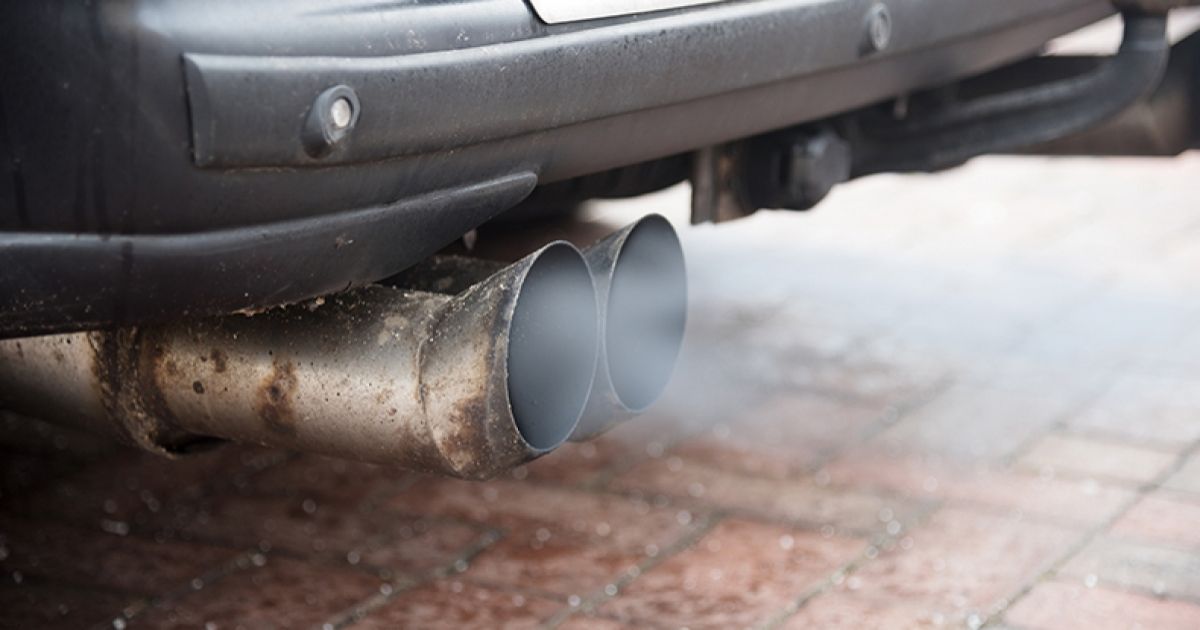What Comes Out Of Car Exhaust

Let's talk about what comes out of your car's exhaust pipe. Understanding this isn't just for gearheads; it's crucial for informed maintenance, performance tuning, and even diagnosing potential problems early on. Think of this article as a deep dive into the end result of your engine's combustion process – what's getting tossed out the back and why it matters.
Why Understanding Your Exhaust Matters
Why should you care about exhaust composition? There are several key reasons:
- Diagnostics: Changes in exhaust color, smell, or measured emissions can indicate a range of issues, from a faulty oxygen sensor to a failing catalytic converter or even a blown head gasket.
- Performance Tuning: Modifying your engine (chipping, adding performance parts) directly impacts exhaust composition. Understanding the effects allows you to optimize for power, efficiency, and emissions compliance.
- Environmental Responsibility: Knowing what pollutants your car emits empowers you to maintain it properly and minimize its environmental impact.
- Repair Decisions: Deciding whether to repair or replace components like the catalytic converter requires an understanding of their function and the impact of their failure.
Key Specs and Main Parts
Let's break down the key players involved in producing your car's exhaust, starting with the engine itself:
- Engine: The heart of the system, where fuel and air are combusted, creating power and, unfortunately, exhaust gases. The stoichiometric ratio (ideal air-fuel mixture for complete combustion) is around 14.7:1 for gasoline engines.
- Exhaust Manifold/Headers: Collects exhaust gases from each cylinder. Headers are a performance upgrade, often designed to improve exhaust flow.
- Oxygen Sensors (O2 Sensors): Placed before and after the catalytic converter. They monitor the oxygen content in the exhaust, providing feedback to the engine control unit (ECU) to adjust the air-fuel mixture. There are typically upstream (pre-cat) and downstream (post-cat) sensors.
- Catalytic Converter: The primary emissions control device. It uses catalysts (platinum, palladium, rhodium) to convert harmful pollutants into less harmful substances. It's essential for meeting emissions standards.
- Muffler: Reduces exhaust noise. Different muffler designs affect sound level and exhaust flow.
- Resonator (Optional): Further reduces noise and can tune the exhaust note.
- Tailpipe: The final outlet for exhaust gases.
What's Actually Coming Out?
The goal of the exhaust system, particularly the catalytic converter, is to minimize the release of harmful substances. Ideally, the exhaust should consist primarily of:
- Nitrogen (N2): A relatively inert gas that makes up the majority of the air we breathe.
- Water Vapor (H2O): A product of combustion.
- Carbon Dioxide (CO2): A greenhouse gas, but less harmful than other combustion byproducts.
However, real-world combustion is never perfect. Here's what else you might find:
- Carbon Monoxide (CO): A colorless, odorless, and deadly poisonous gas produced by incomplete combustion. A properly functioning catalytic converter should drastically reduce CO levels.
- Hydrocarbons (HC): Unburned or partially burned fuel. High HC levels indicate inefficient combustion, which could stem from faulty injectors, worn spark plugs, or other issues.
- Nitrogen Oxides (NOx): Formed at high temperatures during combustion. NOx contributes to smog and acid rain. The catalytic converter helps to reduce NOx emissions.
- Particulate Matter (PM): Tiny solid particles, especially problematic in diesel engines. Diesel particulate filters (DPFs) are used to trap PM.
How It Works: The Chemistry Behind the Smoke
The catalytic converter utilizes redox reactions (reduction-oxidation reactions) to transform harmful pollutants into less harmful substances. It typically has two sections:
- Reduction Catalyst: Reduces NOx into nitrogen and oxygen.
- Oxidation Catalyst: Oxidizes CO and HC into CO2 and H2O.
Think of it like a chemical processing plant strapped to your car. The O2 sensors play a critical role by providing feedback to the ECU, which adjusts the air-fuel mixture to ensure the catalytic converter operates efficiently. A lean mixture (more air than fuel) favors oxidation, while a rich mixture (more fuel than air) favors reduction. The ECU constantly adjusts to maintain the optimal balance.
Real-World Use: Basic Troubleshooting Tips
Here are some basic troubleshooting tips based on exhaust symptoms:
- Black Smoke: Typically indicates a rich mixture. Check for faulty injectors, a bad mass airflow sensor (MAF), or a clogged air filter.
- Blue Smoke: Indicates burning oil. This could be due to worn piston rings, valve stem seals, or a failing turbocharger. It's a serious problem.
- White Smoke: Can be normal on a cold start, especially in humid conditions. However, persistent white smoke could indicate a blown head gasket, allowing coolant to enter the combustion chamber.
- Rotten Egg Smell: Often caused by a failing catalytic converter. The converter is struggling to process sulfur compounds in the fuel.
- Check Engine Light (CEL) with Emissions Codes: Requires diagnostic scanning. Common codes relate to O2 sensors, catalytic converter efficiency, or fuel trim.
Safety: Handle with Care
The exhaust system operates at extremely high temperatures. Never work on it immediately after driving the car. Allow ample time for it to cool down to prevent burns. Also, carbon monoxide is a deadly gas. Always work in a well-ventilated area when the engine is running. Avoid breathing exhaust fumes directly.
Important: The catalytic converter reaches extremely high temperatures and can remain hot for a significant time after the engine is shut off. Exercise extreme caution when working near it.
Working on O2 sensors requires care as well. Disconnect the negative battery terminal before handling any electrical components. Avoid touching the sensor element to prevent contamination.
Remember that modifications to the exhaust system may affect your car's emissions and may be illegal in some areas. Always check local regulations before making any changes.
Conclusion
Understanding what comes out of your car's exhaust is a valuable skill for any car owner. It can help you diagnose problems, optimize performance, and ensure that your vehicle is operating efficiently and responsibly. While this article provides a solid overview, it's important to consult your vehicle's repair manual and seek professional assistance when needed.
